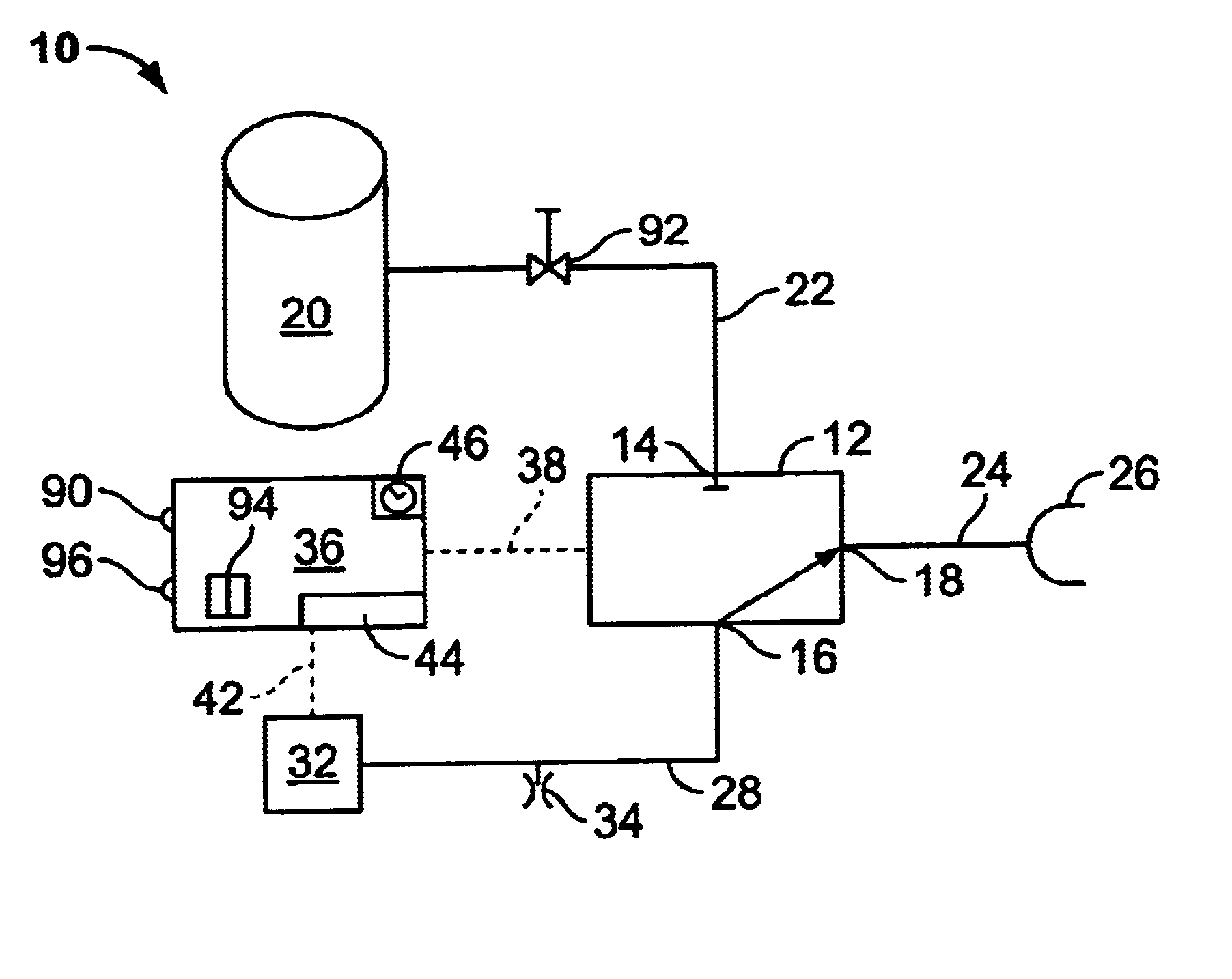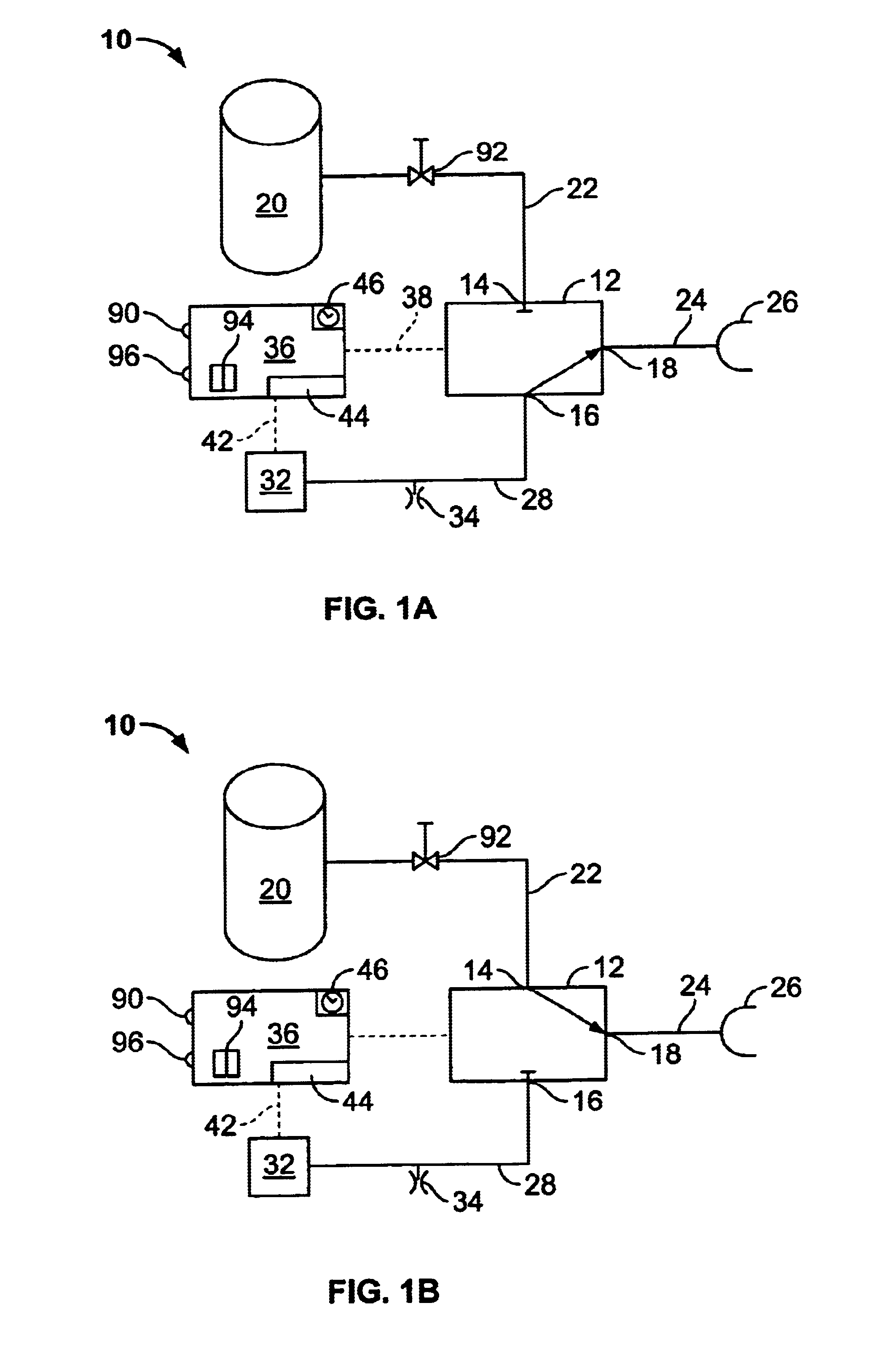Self-calibrating supplemental oxygen delivery system
a supplemental oxygen and self-calibrating technology, applied in mechanical equipment, valves, respirators, etc., can solve problems such as the inability to efficiently calibrate or zero the pressure transducer, the loss of oxygen to the ambient atmosphere, and the deterioration of lung function of patients
- Summary
- Abstract
- Description
- Claims
- Application Information
AI Technical Summary
Benefits of technology
Problems solved by technology
Method used
Image
Examples
Embodiment Construction
[0025]An embodiment of the supplemental oxygen delivery system of the invention is indicated in general at 10 in FIGS. 1A and 1B. As will be explained in greater detail below, FIG. 1A illustrates the system with its valve 12 in the closed condition or configuration so that oxygen is not being delivered to a patient. In contrast, FIG. 1B illustrates the system with its valve 12 in the open condition or configuration so that oxygen is being delivered to a patient.
[0026]As illustrated in FIGS. 1A and 1B, the system features a 3-port two position solenoid-actuated poppet valve 12 having two input ports 14 and 16 and one outlet port 18. While a solenoid valve is described herein, other types of valves known in the art may be alternatively used. Inlet port 14 communicates with a pressurized gas source, such as a tank 20 containing oxygen, via a line 22. Depending upon the particular environment of use, the pressurized gas source may be a portable tank or a wall supply, as in a hospital. T...
PUM
 Login to View More
Login to View More Abstract
Description
Claims
Application Information
 Login to View More
Login to View More - R&D
- Intellectual Property
- Life Sciences
- Materials
- Tech Scout
- Unparalleled Data Quality
- Higher Quality Content
- 60% Fewer Hallucinations
Browse by: Latest US Patents, China's latest patents, Technical Efficacy Thesaurus, Application Domain, Technology Topic, Popular Technical Reports.
© 2025 PatSnap. All rights reserved.Legal|Privacy policy|Modern Slavery Act Transparency Statement|Sitemap|About US| Contact US: help@patsnap.com



